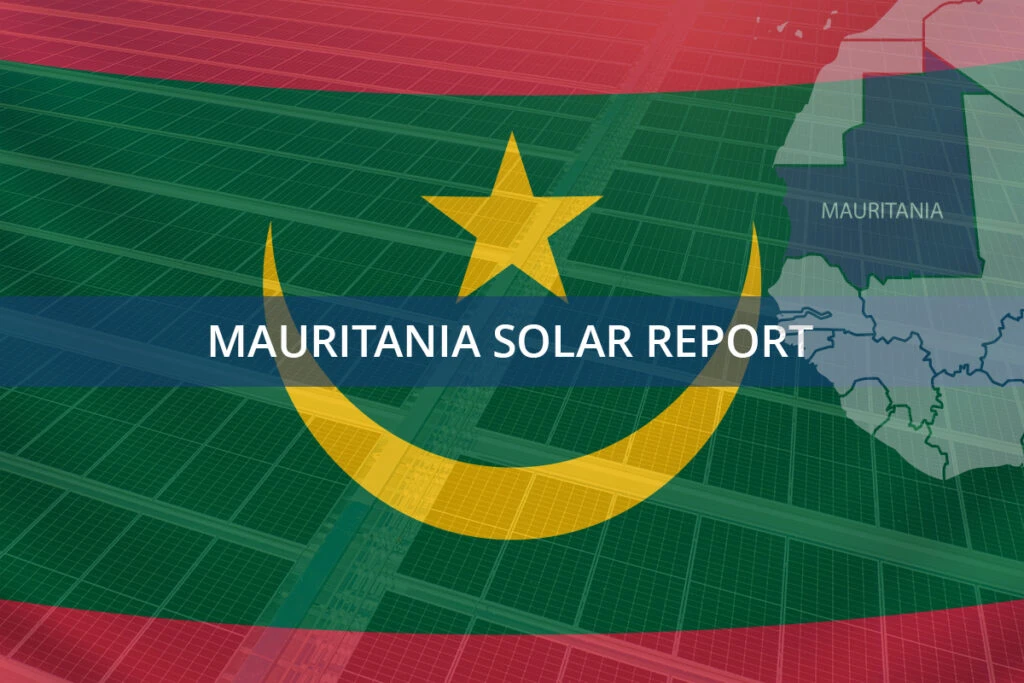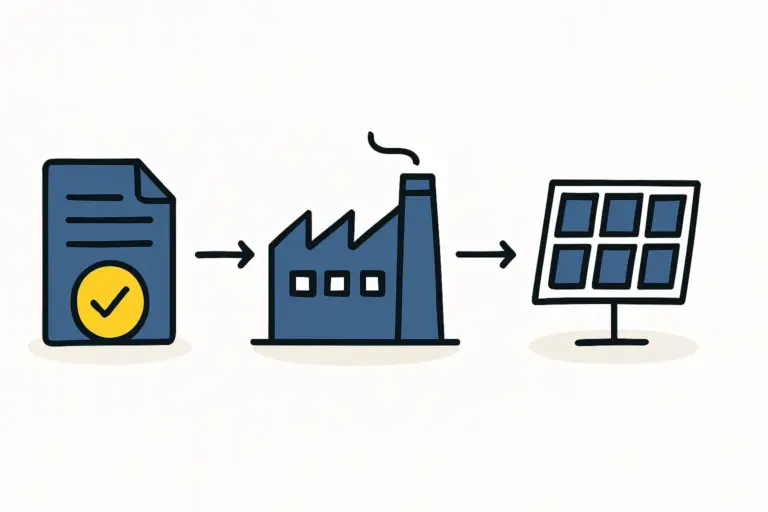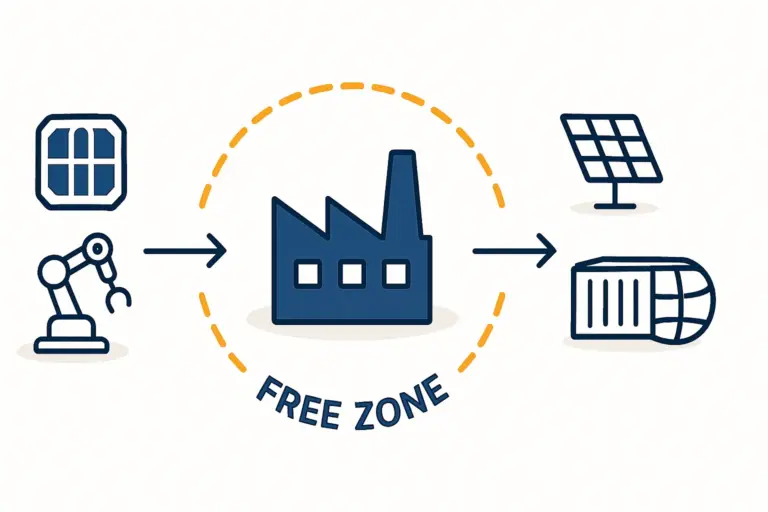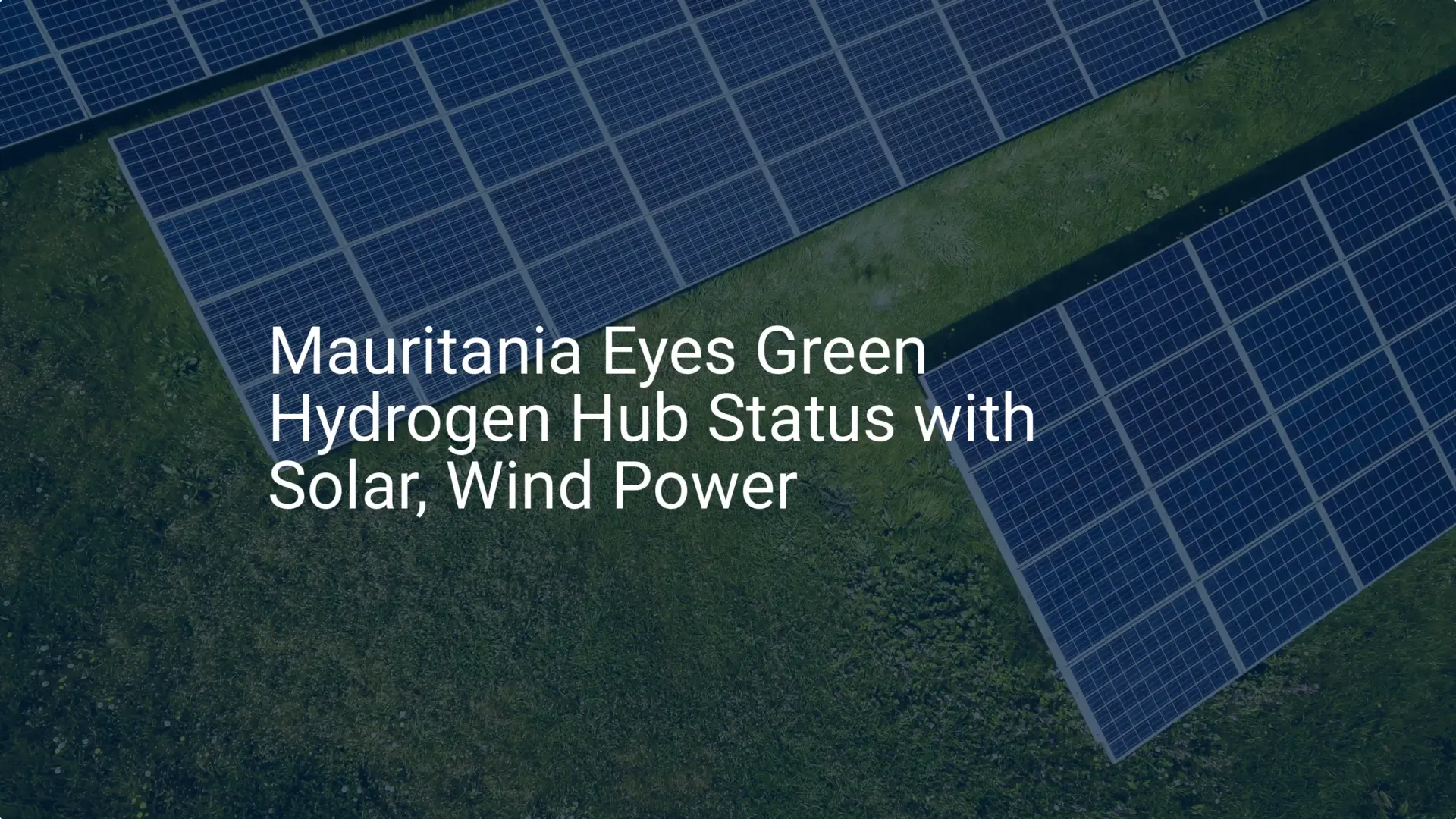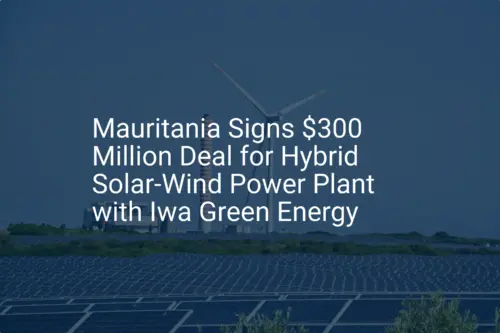An entrepreneur planning a solar module factory often focuses first on the machinery and the facility. Though essential, the true engine of a manufacturing operation is its supply chain.
A state-of-the-art production line stands idle without a consistent, reliable, and cost-effective flow of raw materials. For a venture in Mauritania, a nation with immense solar potential but a developing industrial base, mastering this flow separates a business plan from a profitable reality.
This guide outlines the critical logistics and sourcing considerations for establishing a solar module assembly plant in Mauritania. It covers the core components required, import logistics via the Port of Nouakchott, and strategies for building a resilient supply chain in a West African context.
The Core Bill of Materials (BOM) for a Solar Module
A sourcing strategy begins with understanding the primary components of a finished solar module. Each material presents unique sourcing challenges related to weight, fragility, cost, and its global manufacturing footprint.
The main components are:
-
Solar Glass: The front layer, specifically low-iron, tempered glass designed for high light transmission and durability.
-
Solar Cells: The active components that convert sunlight into electricity. These are the most technologically sensitive and high-value parts.
-
Encapsulant (EVA/POE): Polymer sheets (typically Ethylene Vinyl Acetate) that are laminated to encapsulate the solar cells, protecting them from moisture and impact.
-
Backsheet: The rearmost polymer layer that provides mechanical protection and electrical insulation.
-
Aluminum Frame: Provides structural rigidity and a means for mounting the module.
-
Junction Box: An enclosure on the back of the module where the cells are electrically connected; it houses bypass diodes and output cables.
Assembling these components requires a precise operational sequence using the necessary machinery for solar panel manufacturing to ensure quality and performance.
The Strategic Gateway: Port of Nouakchott
For a Mauritanian solar enterprise, nearly all raw materials will arrive by sea. The Autonomous Port of Nouakchott is the country’s primary commercial gateway, handling approximately 90% of its international trade. Understanding its operations is a cornerstone of any logistics plan.

The port features terminals for containers, bulk cargo, and other goods. All key module components—from fragile solar glass packed in crates to rolls of EVA and pallets of junction boxes—will be processed through its container facilities.
While the port is the central entry point, effective planning must account for potential challenges:
-
Customs Clearance: Navigating customs efficiently requires meticulous documentation and often the expertise of a local logistics partner. Delays here can disrupt production schedules.
-
Port Congestion: Like many strategic ports, Nouakchott can experience periods of high traffic, leading to longer wait times for vessels to berth and offload.
-
Inland Transport: Once cleared, materials must be transported from the port to the factory. The quality of road infrastructure and the availability of suitable trucking services are key considerations.
Sourcing Strategy: Balancing Global Imports and Regional Opportunities
A resilient supply chain avoids dependence on a single region. While Asia is the dominant global supplier for most solar components, exploring regional opportunities can reduce lead times and logistics risks for certain materials.
Global Sourcing: The Established Pathway
The majority of high-tech solar components are manufactured in Asia, particularly China.
- Solar Cells, EVA, and Backsheets: The scale, cost-effectiveness, and technological leadership of Asian manufacturers make them the default source for these critical items.
Advantages: Competitive pricing and access to the latest technology.
Disadvantages: Long sea freight times (transit typically takes 45-60 days), vulnerability to global shipping disruptions, and currency fluctuation risks.
Regional Sourcing: The Strategic Alternative
For bulkier or less technologically complex components, neighboring countries in North and West Africa present viable alternatives that strengthen the supply chain.
-
Aluminum Frames: Morocco has a well-developed industrial sector with established aluminum extrusion companies. Sourcing frames from Morocco could significantly shorten lead times and reduce transportation costs compared to shipping from Asia. Senegal’s growing industrial base may also offer future opportunities.
-
Solar Glass: While most specialized solar glass is produced in Asia and Europe, established glass manufacturers exist in North Africa (e.g., Morocco, Egypt, Algeria). They may not initially compete on price with global leaders, but they represent an important option for supplier diversification and risk mitigation.
A hybrid approach is often the most prudent strategy: sourcing high-value cells and specialized polymers from established global leaders in Asia while actively developing relationships with regional suppliers for frames and potentially glass.

Building a Resilient Supply Chain in West Africa
A strategy is only effective in practice, and success hinges on a few key operational principles.
Inventory Management and Warehousing
Given the long lead times from Asia, a ‘just-in-time’ inventory model is impractical.
-
Buffer Stock: Maintaining a three- to six-month buffer stock of critical imported components is a standard risk-mitigation strategy. This protects production from unforeseen shipping delays or supplier issues.
-
Warehousing Costs: The cost of holding this inventory, including secure warehousing space, must be factored into the initial investment requirements for setting up a solar module factory.
Supplier Vetting and Diversification
Relying on a single supplier for any component, even if it offers the lowest price, introduces significant risk. A robust vetting process should assess not only price but also production quality, financial stability, and communication reliability. Cultivating relationships with at least two qualified suppliers for each key component is a vital long-term goal.
The Critical Role of a Local Logistics Partner
For an international entrepreneur, a reliable local freight forwarder and customs broker is an indispensable partner. This partner manages the complex process of port clearance, tariff payments, and inland transportation, ensuring materials move smoothly from the dock to the factory floor. Experience from J.v.G. turnkey projects shows that selecting this partner is one of the most important early decisions.

Financial and Planning Considerations
A supply chain strategy has a direct impact on the financial health of the manufacturing venture. Planners must account for:
-
Freight Costs: Ocean freight rates are volatile and can significantly affect the final cost of materials.
-
Import Tariffs: Understanding Mauritania’s tariff schedule for each raw material is essential for accurate financial modeling. Trade agreements like the African Continental Free Trade Area (AfCFTA) may create future advantages for regional sourcing.
-
Payment Terms: Suppliers typically require payment via Letter of Credit (L/C) or Telegraphic Transfer (T/T), which requires careful cash flow management.
Managing these variables is a core component of de-risking the project. Structured guidance, such as that provided by turnkey solar module production lines, can be invaluable in this area.
Frequently Asked Questions (FAQ)
Can I source all solar module materials locally in Mauritania?
At present, Mauritania lacks an industrial base for manufacturing core solar components like cells, specialized glass, or polymers. A 100% local sourcing strategy is therefore not feasible. The focus must be on efficient importation and exploring regional suppliers.
What is the biggest supply chain risk for a new factory in Mauritania?
The primary risk is logistical delays. This includes shipping delays from distant suppliers (e.g., in Asia), congestion or administrative hurdles at the Port of Nouakchott, and challenges with inland transportation. A robust inventory buffer is the most effective way to mitigate this risk.
How long does it take to ship materials from Asia to Nouakchott?
Standard sea freight from major Asian ports to Nouakchott typically takes between 45 and 60 days. This does not include the time for production, inland transport to the departure port, or customs clearance upon arrival. A total lead time of 90 days from order to factory delivery is a reasonable estimate for planning purposes.
Is it better to source cheaper materials or focus on high-quality ones?
While cost control is important, using low-quality materials can lead to high defect rates during production, poor module performance, and poor reliability in the field. This can damage the brand’s reputation and lead to costly warranty claims. Sourcing certified, high-quality materials from reputable suppliers is a critical investment in the company’s long-term success.
Conclusion: From Sourcing Strategy to Operational Success
Mauritania’s goal of achieving 50% renewable energy by 2030, combined with its world-class solar irradiation, creates a compelling opportunity for local solar module manufacturing. However, success is not built on solar resources alone.
Instead, it is forged through meticulous operational planning, with a resilient and well-managed supply chain at its core. By strategically blending global and regional sourcing, maintaining adequate inventory, and forming strong logistics partnerships, an entrepreneur can build a factory that not only produces solar modules but also delivers sustainable value. This foundational work transforms a complex logistical challenge into a powerful competitive advantage.

